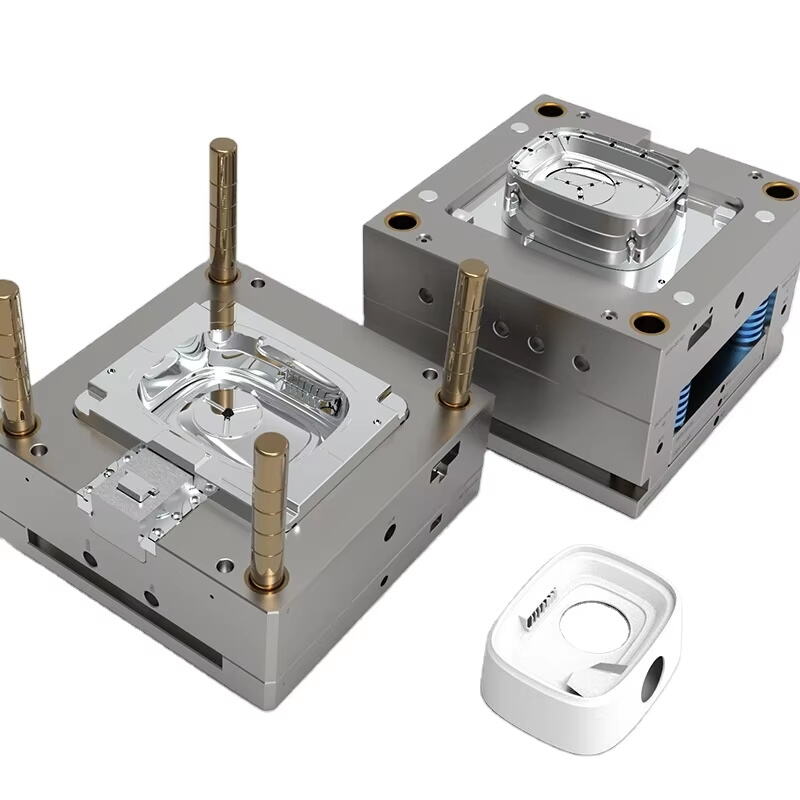Overview of Common Problems in Plastic Injection Molding
Plastic injection molding is a manufacturing process that involves injecting molten plastic into a mold to produce custom parts and components. This process is crucial in the creation of a wide range of products, from simple household items to complex medical devices, due to its ability to efficiently produce detailed and durable components. The demand for cost-effective production of high-quality custom injection molded parts underscores the technology's significance in manufacturing industries.
Maintaining high-quality standards in injection molded parts is vital, as defects can significantly impact production costs and material waste. For instance, statistics from industry reports suggest that defect rates as low as 5% can lead to substantial financial losses due to increased waste and the need for rework. Addressing common mold issues is essential to enhance production efficiency and ensure the integrity of the final products. By understanding and mitigating these defects, manufacturers can avoid additional costs and potential losses associated with unsellable goods and product returns.
Common Problems with Plastic Injection Molds and Solutions
In the plastic injection molding process, various defects can arise, affecting the quality of the final product. Understanding these common issues and their solutions can significantly enhance production efficiency and product quality. Here are some prevalent problems in plastic injection molds and their respective solutions.
Warping
Warping in injection molded parts often results from improper cooling rates, which lead to uneven shrinkage and distorted shapes. This issue can be mitigated by redesigning the cooling channel within the mold to ensure uniform cooling rates across the part. Additionally, selecting materials with low shrinkage tendencies can also prevent warping. For instance, a case study involving automotive components highlighted how modifying the cooling layout reduced warpage by 20%, leading to a more stable final product.
Short Shots
Short shots occur when the molded plastic fails to fill the mold cavity entirely, often due to insufficient injection pressure or a poorly designed mold. To rectify short shots, it's crucial to optimize the injection pressure by ensuring it is sufficient to fill all cavities thoroughly. Moreover, improving mold design—considering cavity size and layout—can facilitate better material flow. Experts suggest that enlarging mold gates and using a less viscous material can effectively combat short shots, thereby enhancing the fill completion rate.
Flash
Flash defects occur when excessive molten plastic escapes through parting lines of the mold due to inadequate clamping pressure. To prevent flash, it's essential to ensure proper mold maintenance and clamping force adjustment. Routine inspection and replacement of worn mold parts, as well as correctly aligned venting strategies, can prevent molten material from seeping out. Industry examples demonstrate that periodic mold maintenance and ensuring optimal clamping pressure significantly reduce the occurrence of flash, leading to cleaner product edges.
Sink Marks
Sink marks are characterized by small depressions in the surface of a part, usually due to uneven cooling or wall thickness inconsistencies. Solutions include adjusting wall thickness, ensuring it is consistent throughout the part, and enhancing material flow with appropriate mold design changes. A technical study found that optimizing the mold’s holding pressure and cooling time can improve surface uniformity and reduce sink marks, improving the overall appearance and structural integrity of the part.
Surface Imperfections
Surface imperfections in injection molding can arise from inadequate mold surface finish or misalignment. Improving the mold’s finish quality and ensuring precise alignment can enhance the product’s aesthetic and functional quality. Research indicates that by polishing mold surfaces and ensuring precise assembly of mold components, manufacturers can reduce surface defects significantly, resulting in higher quality and visually appealing parts.
--- Understanding these common issues and implementing the solutions can dramatically improve the quality of injection-molded parts. By focusing on process optimization and proper material selection, manufacturers can achieve significant reductions in defects, leading to cost efficiency and improved product reliability.
Preventive Measures for Injection Molding Defects
Preventive measures are crucial for minimizing defects in injection molding. Regular mold maintenance is vital in this process, as routine inspections, cleaning, and repairs ensure that molds operate efficiently. Industry standards recommend implementing a consistent maintenance schedule to identify potential issues before they escalate into defects during production. This approach not only improves product quality but also extends the lifespan of the mold, reducing long-term costs.
The quality of raw materials significantly impacts the injection molding process. Ensuring that materials meet stringent quality control standards can prevent defects such as warping or discoloration. According to recent studies, maintaining high standards in material quality can reduce defect rates by up to 30%. It is essential to source materials from reputable suppliers and regularly test them for impurities or inconsistencies to uphold production quality and reliability.
Technological innovations are transforming the injection molding industry, enhancing precision and efficiency. Advanced automation systems and computer simulations are now pivotal in optimizing mold design and testing processes. Technologies such as predictive modeling allow manufacturers to foresee potential defects and adjust parameters accordingly. These technological advancements ensure that injection molding processes are more accurate and reliable, resulting in high-quality plastic parts with fewer defects.
Conclusion
In conclusion, addressing common injection molding issues requires proactive strategies such as regular mold maintenance and strict material quality control. By implementing these solutions, manufacturers can significantly reduce defects and enhance the quality of injection molded components. Looking forward, the integration of AI technologies and sustainable practices promises to advance the industry. As these trends develop, they will likely drive improvements in quality and efficiency within plastic injection molding, paving the way for more innovative and environmentally friendly solutions in the future.
FAQ
What is plastic injection molding?
Plastic injection molding is a manufacturing process where molten plastic is injected into a mold to create parts and components, used in a variety of products from household items to complex medical devices.
What are the common defects in plastic injection molding?
Common defects in plastic injection molding include warping, short shots, flash, sink marks, and surface imperfections.
How can warping be reduced in injection molding?
Warping can be reduced by ensuring uniform cooling rates through mold cooling channel design and selecting materials with lower shrinkage tendencies.
What role do materials play in preventing injection molding defects?
High-quality materials meeting stringent quality control standards play a crucial role in preventing defects such as warping and discoloration in the injection molding process.

